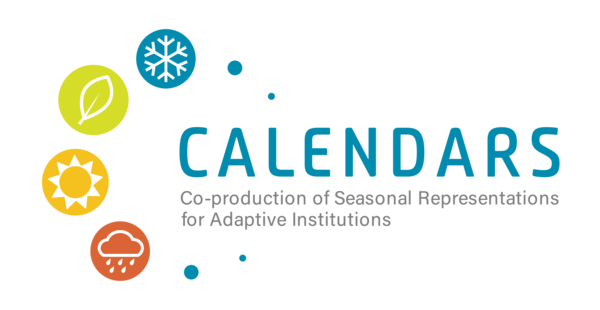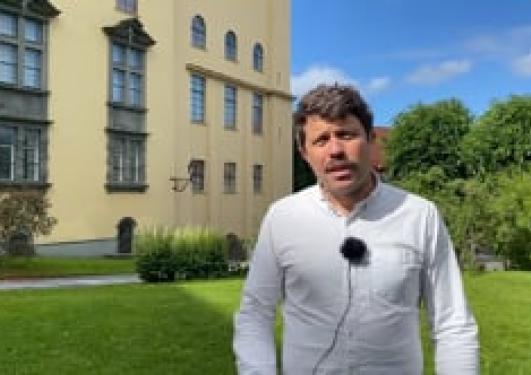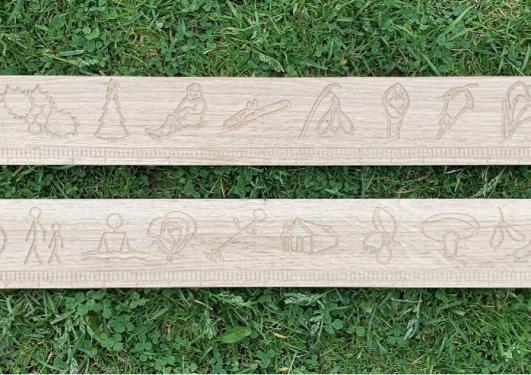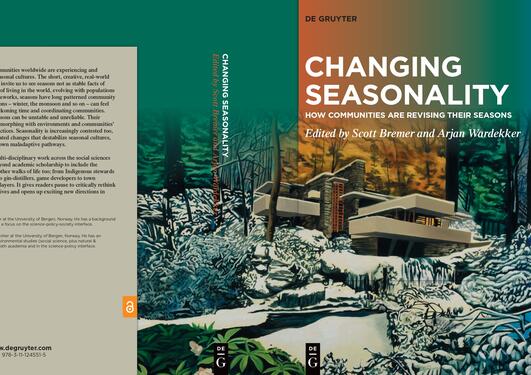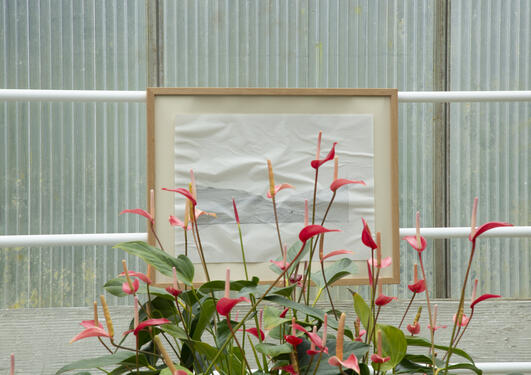It's the time of the season
University of Bergen researcher Scott Bremer is on time with a new research path as his EU-funded project on seasons wraps up.
CALENDARS: Introduction to the project
Hovedinnhold
Scott Bremer is a busy man these days. He is finalizing his project CALENDARS, an EU-funded project that ran from 2019 to 2024. Recently, he was elected the new Chair of Young Academy of Europe, and currently he is carving out a new research path on which CALENDARS set him.
Seasonal mismatches
The ERC-funded project, which Bremer led from the Centre for the Study of the Sciences and the Humanities (SVT) at the University of Bergen, comprised of both Norwegian and New Zealand researchers and practitioners. It was built on an idea that climatic and other changes are undermining the cultural frameworks or calendars that people use for living by seasonal rhythms.
As Bremer explains in the above video:
"The CALENDARS project studies seasonal mismatches: When the seasonal conditions that we expect do not correspond with the seasonal conditions we get. This can have effects on our activities, what we do when, and how adaptable we are in the different environments that we live in."
What does this mean in practice? Bremer gives the following examples:
"Think about agriculture or hunting; when you may go out to try and find a certain animal or sow seeds at a certain time, and then the rains don’t come, or the animal’s lifecycle is changed. Or think about our urban environment; when stormwater systems and the management of those systems are out of synch with the patterns of rainfall that we start to experience."
Recalibrating calendars to shifting seasonal realities
In the project, Scott and his team focused on what happens when people face these mismatches and look for new seasonal ways of life. They did this by zooming in communities and institutions like schools, botanical gardens, artist collectives and conservation groups.
They also worked closely with groups of people in targeted communities and institutions to together appraise their calendars and recalibrate them to shifting seasonal realities.
"We didn't aim to simply observe changing seasonality but also help bring about changes in how people perceive and give effect to seasons through a transdisciplinary approach mobilizing scientists and targeted groups as an extended peer community. We encouraged practitioners to "think again" about seasons with researchers; through interviews, participant observation and workshops."
The researchers also teamed up with artists, designers, and filmmakers, because, as Bremer notes, “to the extent seasons are cultural frameworks, it makes sense that they change culturally.”
Tools to facilitate conversations on seasonality
The ultimate aim of the project was to co-produce revised calendars and understandings of how to act seasonally, and on the project legacy page, you can find examples of the project’s results: Drawn calendars, a digital calendar bar tool, as well as other tools used during the project to facilitate reflections and conversations on seasons and seasonality.
In the making of the toolbox, the researchers have aimed to make the different activities easy to adapt to different groups and settings. Each tool has a "learning plan" that includes a short introduction of the tool, how to use it and its goal.
Other notable output from the project is the edited anthology Changing Seasonality – How Communities are Revising their Seasons, a rich and accessible book that asks readers from all backgrounds to rethink what seasons mean to them, the film Tidelines by filmmaker James Muir, which documented the project's research in New Zealand for over two years, and the exhibition A path is a thought stretched out in time and space in the Bergen University Garden’s Arboretum; where contemporary artists showed works that related to the seasons in different ways.
From revised calendars to 'good timings'
While CALENDARS is coming to an end, its legacy is also forming Bremer’s research path ahead. According to Bremer, the project revealed timings as a key adaptive strategy systematically overlooked in adaptation governance.
"As part of the project, I was on ethnographic fieldwork in the Arboretum when my eyes were opened to the mess of rhythms running through the gardens, and the skill of the gardeners to time their work at the opportune moment, when ecological, climatic, institutional, and technological rhythms intersected."
However, when Bremer tried to raise 'timing' as a topic, and especially how to shift timings in line with environmental change, this proved challenging.
"A competence for 'good timing' differed drastically across the gardeners and botanists I spoke to. None could agree, in part because knowledge of timing is so tacit, difficult to put into words."
Bremer first cast around the adaptation literature for help on how to govern or synchronise these timings, but to no avail.
"Then I reached out to leading scholars of time and rhythmicity – Barbara Adam, Michelle Bastian, Gordon Walker – and invited them to symposia to think about this topic."
Climate adaptation overlooks temporal coordination
Over the past two years, Bremer had many of these interdisciplinary conversations, and he and his colleagues identified a knowledge gap in climate adaptation research: The influence of timing on adaptation governance.
"Adaptation has tended to reduce time to a singular coordinate of linear 'clock time' with a focus on anticipating and acting in advance of future climate impacts."
In a comment in Nature Climate Change last year, Bremer and co-authors Nicole Klenk, Michelle Bastian and Danielle Kwan-Lafond claim that climate adaptation overlooks temporal coordination — the ways skilful practitioners re-calibrate individual or collective practices to attune to shifting social and environmental rhythms — as a key aspect of adaptive capacity.
"Arguably this stems from adaptation’s blinkered temporal focus on climate futures, and a temporal illiteracy that assumes adaptation can be mapped along a single timeline, set to clock time. We argue that climate change adaptation must consider the implications of climate change for the timings of community life in the present."
According to Bremer and his co-authors, this means setting aside notions of a singular coordinate of clock time to consider timings in their particular social and ecological context, extending a regard to the polyphony of temporalities — rhythms of motion and change — that people track and time activities to in 'timescapes.'
Leading young European scholars in science policy advice
Bremer’s own timing is good: As his project on seasons is ending, he has already started working towards advancing our understanding of how climate adaptation governance processes mobilise temporal capacity – temporal frameworks and expertise – for coordinating timely action and uncover the factors and approaches contributing to this capacity for timely action.
In his work as the newly elected Chair of Young Academy of Europe (YAE), there will also be synergies with his new research path. The organization consists of recognized European young scholars who provide input and advice on science policy.
"As chair of YAE, I will be assuming an active role in the ecosystem of European organisations and networks influential in science-policy and science-for-policy. This work overlaps with the climate adaptation policy circles that I am working in, expanding the ways of knowing admitted to these settings."
